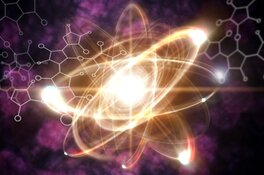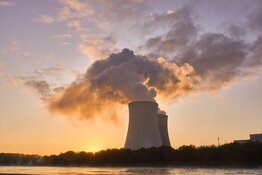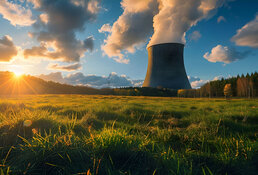The key markets for the renaissance were the U.S. and the UK. As pioneers of nuclear power, potentially large markets and countries that seemed to have abandoned plans for new nuclear plants, a successful revival in these countries would have been a powerful endorsement for these new technologies. Following on, the expected reversal of nuclear phase-outs in Germany and Italy would have provided two more large, high-prestige markets.
These follow-on markets are now clearly off the agenda. However, the U.S. and UK governments seem oblivious to the idea that Fukushima might have any implications for new build plants. The incentives in terms of loan guarantees in the U.S. and long-term power purchase agreements (PPAs) at nonmarket prices in the UK are still in place. Government commitment appears undiminished.
Yet turning a blind eye to Fukushima is clearly not sustainable. The hope that the disaster can be written off as having relevance only to earthquake- and tsunami-prone countries with Mark 1 Boiling Water Reactors is no more credible than the hope that Chernobyl would have relevance only to a particular Soviet design operated in an inexplicable way.
Gen III+ Claims
The nuclear industry would probably like to forget the claims it made for Generation III+ designs. In short, Gen III+ reactors would achieve the dream combination of being both safer and simpler, making them cheaper and easier to build. The expected overnight (excluding finance charges) construction cost was forecast to be no more than $1,000/kilowatt hour (KWh), so that a typical 1,500-megawatt (MW) nuclear power plant would cost $1.5 billion (B). This was much less than the few plants completed in the 1990s and, not by coincidence, a figure that meant power from new nuclear reactors would be competitive with power from gas-fired plants.
However, the $1,000/KWh promise quickly began to unravel, when the first order for a Gen III+ design, Olkiluoto in Finland, was priced in 2004 at more than double that level. Construction of the European Pressurized Reactor (EPR) supplied by French company Areva, and its only successor so far in the West, Flamanville in France, has descended into farce. Both plants are now five years over their expected construction time and the latest cost estimates are about double the level forecast at construction start. Most recent serious cost estimates and bids in the past few years for Gen III+ designs have been of the order of $6,000/KWh.
However, finance is only partly about build cost. The main issue is risk and comes from the poor record of nuclear plants being built to time and cost, a reputation only worsened by Olkiluoto and Flamanville. The banks have signaled that they are unwilling to bear this risk, leaving three sets of interests that might be able to take it on: the utilities, the vendor or the consumer, in some form, via the state.
In the past, nuclear power plants have been built with the assumption that consumers would bear the risk because electricity tariffs would recover whatever costs were incurred. When U.S. regulators became unwilling to pass on all these costs in the late 1970s, under pressure from the financial community, ordering there came to an abrupt halt and many plants already ordered and under construction were abandoned. A decade later, as competitive electricity markets began to replace monopolies in Western Europe, nuclear mainly ceased to be a financeable option there too. Although Finland is part of a competitive electricity market, Olkiluoto was fully insulated from it by PPAs lasting the lifetime of the plant, priced at whatever costs were incurred. Similarly, while France is theoretically an open electricity market, EDF, the builder of Flamanville, remains a de facto monopoly supplier.
The attempted U.S. revival dating back to 2002 was based on shifting the risk from the banks to taxpayers by granting loan guarantees for nuclear projects. Even in today's economic situation, sovereign debt is good enough to convince most banks to lend, allowing borrowing at not much more than base rate. However, there are other problems with loan guarantees in addition to the likely reluctance of vendor countries to add to their debts.
First, according to international agreements, there should be a premium on the loan cost, either a fee or a higher interest rate that reflects this risk. If the size of this premium accurately reflects the risk, logically, the cost of this premium should be the same as if the private sector was taking the risk. So if loan guarantees are economically priced, they may offer no financial advantage. Second, if the project does go wrong and costs escalate, the utility will have to go to the market to borrow more money to support a failing project, a situation unlikely to impress shareholders. The possibility that the plant vendor will shoulder the risk no longer exists following Olkiluoto.
When the project started to go badly wrong, Areva quickly refused to honor its "turnkey" contract and the issue of who will pay the extra billions of euro costs will be settled in a court of arbitration. No vendor is now likely to offer a turnkey contract and, even if they did, banks are unlikely to place any value on such a contract.
This brings the issue of shifting the risk from the banks back to convincing consumers that they must bear the risk. The most likely project in the U.S. to go ahead, the Vogtle project for two AP1000 reactors supplied by Toshiba/Westinghouse, is in a state (Georgia) where the regulator is already allowing cost recovery, even before the start of serious construction. The other project with a reasonable chance of success, the Summer project, also for two AP1000s, is also in a state (South Carolina) with a compliant regulator. It is unlikely there will be many more states with regulators willing and able to commit consumers to repay all the costs, especially if things go wrong at these sites. The two U.S. projects that were in states with competitive electricity markets were quickly abandoned.
In the UK, despite the political rhetoric that a new nuclear program would receive no public subsidies, what is now likely to be on offer are feed-in-tariffs and long-term contracts for differences (CfDs). These effectively ensure that all power from nuclear plants is guaranteed to be sold at a predictable price set outside the market.
EDF is the most likely developer in the UK. Whether it will go ahead with an EPR in the UK is likely to depend on whether the design can survive the problems at Olkiluoto and Flamanville and on how fully the CfDs are guaranteed to cover costs. Since the terms of these contracts will be regarded as commercially sensitive, the public will never know what it has signed up to. But, if construction goes ahead, it can be assumed strong cost-recovery guarantees are in place. How the European Commission will view such contracts, which are blatantly unfair state aid and therefore presumably illegal, remains to be seen.
BRICs + South Korea
China has dominated new nuclear plant orders in the past few years, accounting for 25 out of the 38 reactors on which construction started worldwide between 2008 and 2010. Six of these units were for Gen III+ designs, four AP1000s and two EPRs. Almost all the others used a design imported from France in the 1980s, which in turn had been licensed from Westinghouse in the early 1970s. This design, the CPR1000, is showing its age and there was an expectation, even before Fukushima, that the AP1000 would replace it. This would have been a huge boost to the AP1000, giving it the volume of orders that might have allowed costs to come down and for teething problems to be solved. The EPR, by contrast, appears to have no prospect of further orders in China.
However, there were signs that the strain of the rapid pace of construction was beginning to show. In 2011, no new starts were made, compared with 10 in 2010. Fukushima explains this to a degree, but some might have been expected in the first three months of 2011 before disaster struck. The reason behind the slowdown is the high cost of the AP1000. The large Chinese utilities appear to be looking at other options.
There is now talk of pursuing indigenous advanced designs developed from the CPR1000 as well as Small Modular Reactors (SMRs). China has always been adept at convincing nuclear suppliers that there was a great future for their particular technology in China. It is unclear whether talk of SMRs and new advanced designs will go any further. China is looking much less committed to nuclear power than it was a year ago.
There is also speculation that China may enter the export market on the entirely unsupported assumptions that its reactors will be cheap and that it can successfully build them away from home soil. South Africa is particularly enthusiastic about Chinese designs, but whether this enthusiasm can be turned into orders remains to be seen.
The reality is that China needs nuclear power much less than the nuclear industry needs China. For its part, Russia did not order any reactors for its home market for more than two decades after Chernobyl. Six plants, started before Chernobyl, remained under construction for well into the 21st century. All except one (the only one using the Chernobyl design) are now finally on-line. The last was commissioned in 2011 after 25 years under construction.
In 2008, Russia began ordering again with a new design, which it claimed was Gen III+. In 2008–2010, the government started construction on two reactors per year. It also reported export orders to Turkey, Vietnam, India and Bulgaria, although serious work has not started on any of these projects as yet. It also brought on line the reactor in Iran started in 1975, a curious mixture that appears to be a Russian reactor inside a Siemens containment.
Whether the new Russian design would satisfy Western regulators is not known, but the Russian vendor, Rosatom, does seem willing to do deals no other vendor would, and not just in Iran. For Turkey, it is contracted to build and operate four reactors, selling much of the power in a fixed price range, reported to be about €100–120/MWh ($126.87–152.32/MWh).
For India, it has nearly completed two reactors at Kudankulam, and is reported to have agreed to supply 10 more, despite Indian law allowing some limited liability for vendors in the case of an accident, a liability that is proscribed by international treaty elsewhere. The question marks against Russia are whether it can penetrate the larger developed country markets, whether it can continue to offer the sort of deals it has recently signed up to, and whether the technology would stand up to Western regulatory scrutiny
India, meanwhile, has always been a country where there would be a huge nuclear market tomorrow. In part, orders have not materialized because of the proliferation issues raised by the country's 1975 nuclear weapons test and New Delhi's refusal to sign the Nuclear Non-proliferation Treaty (NPT). However, there are also problems of finance and the country's record on construction time and cost. India's nuclear plants probably have the worst reliability record of any nation in the world. Nearly all the country's existing plants are based on the Canadian CANDU design imported before India's nuclear test explosion in 1975.
The deal in 2007 to get round NPT restrictions has opened the way for a flood of reported orders with Areva (EPRs), Toshiba/Westinghouse (AP1000s) and GE-Hitachi (ABWRs). Each has claimed orders for six reactors on top of the 10 reactors ordered from Rosatom. India also plans to build six more of its CANDU design. However, none of these deals looks secure and problems of vendor liability as well as finance—vendors are asking for very strong support from sovereign loan guarantees—may mean few will actually go ahead.
South Korea has established a good reputation for building nuclear plants to cost and time, as well as operating them reliably. However, it was not until 2009 that it entered the international market, selling four reactors to the UAE, undercutting bids by Areva and Toshiba by more than 20%. This caused much soul-searching in France and Japan, where the nuclear industry was mortified at being beaten so comprehensively by what they would see as their technological inferiors. The design South Korea offered is based on a U.S. one, the Combustion Engineering System 80+, which was given safety approval in the U.S. in 1997, but which would now require significant upgrades to be licensable in Europe and the U.S. Work has yet to start in the UAE and it remains to be seen whether South Korea's bid was realistic, or whether it was seriously underpriced, failing to taking into account the issues of building away from home soil. If things go wrong, Korea's entry to the nuclear export market could be short-lived.
Lifetime Extensions
Before Fukushima, there was a strong trend to obtain lifetime extensions for existing plants. Particularly in the U.S. and France, there was an expectation that plant life would be extended from 40 to 60 years (and perhaps 80 years). In France, this has worsened Areva's problems, because France already has more than enough nuclear capacity. Extending existing plants' life to 60 years would mean that the first replacements would not be needed till nearly 2040, leaving Areva dependent on exports in the meantime.
Nevertheless, if the renaissance is indeed stillborn, life extensions would mean vendors would continue to have a strong, safe business for a further 20 to 30 years, providing services, replacement equipment and fuel. That is how the world nuclear industry has survived the past two decades.
However, while life extensions in the U.S. do not seem to have been affected by Fukushima, very surprisingly, in France, they have. EU-mandated "stress tests" at nuclear plants were widely seen as not being likely to uncover much. Essentially it seemed that safety authorities were being asked to assess whether the reactors they had licensed were indeed safe.
Yet it was the French authorities, not known for their aggressive handling of EDF, that have provided the most significant criticisms of existing plants. In its initial review in September 2011, France's nuclear regulator seemed to be following up on the issues of subcontracting it had identified as causing problems at Flamanville. In January 2012, the regulator signaled that life extension was not going to be the license to print money it is often seen as. In short, life extension would cost about €1 billion (B) per plant, about the cost projected originally for a brand new plant.
Technological Cul-de-Sac
If plant life extensions can be achieved in France and the U.S. and Gen III+ does prove a blind alley, it raises the question of what options are open to the nuclear sector. Ten years ago, the industry answer would have been Generation IV designs. Unlike Gen III+, which evolved from existing Pressurized Water Reactors (PWRs) and Boiling Water Reactors (BWRs), these would be based on radical new technologies. Six technologies were selected by the major nuclear countries as the most promising.
However, 10 years on, they seem no closer to commercial deployment. These designs were a mix of designs already pursued, such as sodium-cooled fast reactors and helium/graphite high-temperature reactors, and totally untested options such a lead-cooled fast reactors. The more familiar reactors have a very poor record so far, despite all major nuclear nations trying to develop them over the past 50 years. Demonstration fast reactors like Superphenix, Monju and Dounreay, and high-temperature reactors like THTR-300 and Fort St. Vrain had highly problematic, often short lives.
How the nuclear industry is going to solve problems it has failed to solve over the past 50 years is not clear. The radical new designs require major technological development and progress and it is hard to see who will fund that.
Small Modular Reactors, the latest "rabbit out the nuclear hat," are generally based on scaled down BWR or PWR technology and illustrate the nuclear industry's schizophrenic attitude to reactor size. This is well illustrated by the history of the AP1000 and the Pebble Bed Modular Reactor (PBMR). Around 1990, Westinghouse claimed that they had looked for the scale economies of building ever bigger reactors and found they were not there. They therefore developed the AP600 design, half the size of the reactors they had previously been offering. This received regulatory approval from the U.S. authorities in 1997.
However, by then, it was clear that the AP600 was hopelessly uneconomic, so Westinghouse nearly doubled its output in the AP1000, which received final regulatory approval in December 2011. The AP1000 is still proving far too expensive and China is now examining the possibility of scaling it up to 1,800 MWh to reduce cost.
The PBMR was meant to be a small modular reactor that would fit more easily into small electricity systems. The capacity of sites could be expanded in small steps. The idea was that it could also be upgraded by increasing the coolant temperature from about 850° C to more than 1,000° C, making it one of the Gen IV designs, the Very High Temperature Reactor. If such temperatures could have been achieved, efficient production of hydrogen from water using a catalytic process would have been feasible.
South Africa licensed pebble bed technology from Germany in 1998, the 80-MWh Modul 80 design, and immediately uprated it to 110 MWh. What happened over the next decade is not well reported by the South Africans, but after a decade, the project was running about 25 years behind its original schedule, the estimated cost of a demonstration plant had increased 30-fold and a design fit to submit to the regulator had still not been completed. It appears economics were a serious problem because the design was successively uprated from 110 MWh to 125 MWh, then 137 MWh and finally 165 MWh. In 2010, the South Africans belatedly admitted defeat. SMRs may turn out to be the latest in a long line of nuclear designs that looked good on paper, but could not make the transition to commercial technology.
Nuclear Prospects
Despite attempts by some governments and the nuclear industry to pretend that the Fukushima disaster is not relevant to future investments, it will be decades before the full impact of Fukushima is understood. Chernobyl was a nuclear power plant of dubious design, operated in an inexplicable way in a decaying Soviet Republic, yet 25 years later, no design that was produced to take account of Chernobyl's lessons has entered service.
Fukushima's technology is much closer to the designs that dominate existing capacity and Gen III+ designs. It was also installed in probably the most technologically sophisticated country in the world and the country that taught the world quality control.
The reality the nuclear industry may have to face is the one that has been around since Three Mile Island—that designing a PWR or BWR that can survive a loss of coolant and loss of site power and still be economic is simply not feasible. Fukushima may therefore mark the effective end of the nuclear renaissance in the West.
Nevertheless, the UK and the U.S. will probably build some new units proving only that if enough public money is thrown at nuclear power, new reactors can be built, but the scale of support needed will limit the number to no more than a handful and, as the lessons from Fukushima emerge, the designs available now may need significant and expensive modification. The prospects are somewhat better in the rest of the world, led by the BRICs, but even there, the question marks over costs and technology may mean that nuclear optimism in those countries proves short-lived.
Platts Energy Economist









































